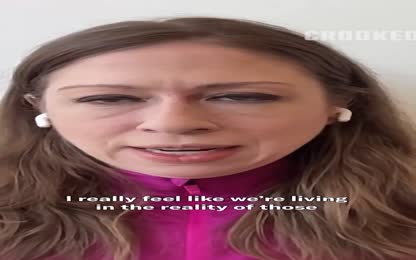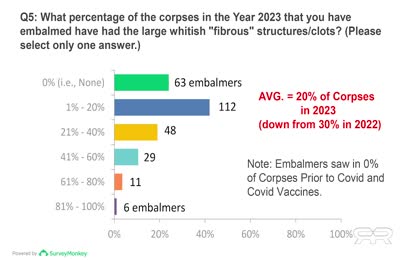Advertisement
Terrain - The Death Of Germ Theory
Terrain - The Death Of Germ Theory
- Category: Covid Related,Honest
- Duration: 01:01:50
- Date: 2022-02-06 23:24:11
- Tags: aids scamdemic plandemic convid1984 the-great-reset nose-swabs poison-needle vax-death
1 Comments
Video Transcript:
1.5% 1.5% 1.5% 1.5% 1.5% 1.5% 1.5% 1.5% 1.5% 1.5% 1.5% 1.5% 1.5% 1.5% 1.5% 1.5% 1.5% 1.5% 1.5% 1.5% 1.5% 1.5% 1.5% 1.5% 1.5% 1.5% 1.5% 1.5% 1.5% 1.5% 1.5% 1.5% 1.5% 1.5% 1.5% 1.5% 1.5% 1.5% 1.5% 1.5% 1.5% 1.5% 1.5% 1.5% 1.5% 1.5% 1.5% 1.5% 1.5% 1.5% 1.5% 1.5% 1.5% 1.5% 1.5% 1.5% 1.5% 1.5% 1.5% 1.5% 1.5% 1.5% 1.5% 1.5% 1.5% 1.5% 1.5% 1.5% 1.5% ...and it's completely empty. You know, it's very interesting, because the people are actually working there, like getting up in the morning and being part of the show. Like, how do they feel? Very interesting for me personally to recognize that this is spiritual warfare. And really sorcery. The power of words as spells, as literal spells that are cast, you know, in neuro-linguistic programming and other areas of psychology have explored, you know, how powerful a three-word phrase could be, safer at home, right? That when we are marinating in these iterated phrases, and we hear them and see them and read them, that they subliminally impact us in the same way that a spell cast would, really. Where we are not conscious of our experience of manipulation. In this current state that we're in, it is a great effort to provoke a fear response in the population. And that, in and of itself, is going to create ill health. And when you get into other realms of physics, we can even explain a great length, how that will create very exact changes in our biology, and even become a self-fulfilling prophecy, and that will create the very symptoms that are then blamed on a microbe that's so called going through the population. Thoughts create things good and bad. Our thoughts are very powerful. We have so much trauma installed within us, potentially accidental, or inherited intergenerational from previous generations, through, for example, experienced the horrors of war. So when we have that installed in us, we haven't resolved our own traumas. It is so easy to trigger the fear response, you know, under the auspices of trying to save us from deadly particles. And so I think ultimately, when we can attain healing and sovereignty within our own self, we become less susceptible to what is fundamentally irrational fear. This most inhumane behavior and treatment of obstructing the two airways, the nose and the mouth, that we need in order to breathe and to take an oxygen, and to then be told that somehow this is virtuous is evil edits. Best or do I say worst? We're under a spell, the spell is materialism. That's the science that we're told is real. When we're so fixated on the germ theory, we stop looking at other causes, and we never really find a solution. I think we should try to see the reality for what it is, and then act with courage and intelligence. I'm not let down by the politicians, the big corporations. I didn't trust them to begin with. What I am disappointed by are the Americans who are giving into this fausty embargo without putting up a fight, without standing up, without pushing back against the lies. That actually surprises me. I did not expect so many Americans to be so compliant with the bargain. With children, it's just absolutely criminal what we're doing to them, because they, more than anybody, are in a very formative stage where they need that face-to-face contact. They need to be able to read the expressions on our face and not feel that there is something wrong with them. They're not in their biology. This is all about fear. And if people were not afraid, you would see this disappear literally overnight. There is no existence of a virus, and unfortunately you need a child to be able to point to the emperor and say he's got no clothes on. Once we can understand that it's a model that is bankrupt, that's built on fraud and misinterpretation, then we can liberate ourselves from it and move towards something much more truthful. Hey Jason, I could really use your help with a little narration and discussion along this journey. My pleasure. I'm sure we won't find all of the answers, but as we explore, hopefully we'll be able to identify that, which isn't. Which opens up the door to discovering that, which is. If you're serious about trying to get to the truth, you have to always keep digging down to the next layer, and eventually you're going to get to that model itself. The interesting thing about the germ theory, it was formulated in the 1800s. The two main proponents were Louis Pasteur and Robert Koch. Basically they said there's one germ for every disease, one microorganism for every disease. And if they couldn't find the microorganism, they said, well, it's too small to see in our microscopes. We'll just call it a virus, which means poison. If most illnesses really are due to poison, and virus actually means poison, then it's a truth for word. However, that's not how it's described by any medical or scientific textbook. It's a problematic word. It's been completely changed in the modern era to refer to some sort of particle containing genetic material that causes illness and is contagious. This simply has never been proven to be the case. They could never prove that plain old bacteria could make a person sick. They could find the bacteria, they could find the bacteria and sick people, but they couldn't make well people sick by exposing them to this bacteria. The public health service did a big study to try to prove that the Spanish flu was contagious, and they completely failed. They could not make well people sick by exposing them to sick people. They took blood from sick people and put it in well people. They had sick people spit on well people. They had mucus from sick people and squirted it into the well people. And then not one case could they make a healthy person sick by exposure to a sick person. Jason, let's take a look at this paper and see for ourselves. Okay, so we've got Boston Harbor volunteers from the Navy. Okay, volunteers, around 30 years old, all wearing good physical condition. Right, a hundred of them. Okay, so they administered Fifers Basilis in a moderate amount into the nostrils of a few of the volunteers. Let's see, one C.C. sprayed into each nostril and into the throat while inspiring and on the eye. None of these took sick. Good Lord. Nostril is blown vigorously into the tray. This is then repeated with the other nostril. The patient then gargles with the solution. Next was injections of blood. Ten C.C. of whole blood were injected into each of the ten volunteers. None of them took sick in any way. The volunteer was led up to the patient's bed, shook hands, got as close as possible. Then the patient breathed out as hard as he could while the volunteer was muzzle to muzzle with him. Received the expired breath and the same time was breathing in as the patient was breathing out. After they'd done this five times, the patient coughed directly into the face of the volunteer, face to face, five different times. None of them took sick in any way. Well, it certainly wasn't from lack of trying. We can say categorically that the Spanish flu was not contagious. Filtered secretions. Thirty-six hours, a young man's temperature rose and remained above normal for a week. Tested positive for strep throat. Germ theory is the theory that states that there is a germ, which is some kind of microscopic organism, that comes from the outside and fades our bodies and causes disease. Viruses are one alleged type of germ can't reproduce, can't move on its own. It cannot take things in that it eats and has metabolism or respiration. Bacteria can do all those things. We usually find them in association with disease. Find bacteria. Find bacteria, and that's because one of the many roles of bacteria is to clean up dead tissue. And when you have dead or inflamed, dying tissue, the bacteria appear that is one of their important roles in life. But to blame the disease on the bacteria is like blaming maggots for killing the dog, because you always find maggots on the dead dog. maggots only eat dead tissue. They will not eat live tissue. We know this from maggot therapy, where they put maggots on wounds that won't heal. Blaming the disease on the bacteria is like telling people that the dog died because it was attacked by maggots, you know? Many times when the narrative is not truthful about something, there is something particular about the words and language. And what I mean specifically is that meanings are inverted. And whenever I see inversions of meanings, it causes suspicion and almost always there's something there. Germ means a new budding or new growth or new life. And that's why we germinate seeds to grow it every season, a new. And that's why the germ cells of our body are the egg and the sperm cells that bring on our next generation. Changing the meaning to an invasive microscopic organism that will make you sick and even kill you is the opposite meaning. Many times we're actually asked to prove that the virus doesn't exist. But in actuality it's the other way around. Because we didn't make a claim that a virus exists or make any other claims really. But there has been a claim made and in fact it's changing the entire world. So it's a very serious claim and it needs to be backed up by very serious and convincing evidence. Just put this in perspective. Whenever I'm in the audience and somebody asks me to raise my hand, I never raise my hand. No matter whether I agree or not, I just, principle, don't. But don't please, don't do that. How many of you in this room think that the 9-11 story that we've been told is the whole truth and nothing but the truth? Please raise your hand if you think that. Right, nobody thinks that. I believe in science. Okay. That's sort of what I thought. But nobody looks into it. There is no investigation, there is no forensic. You could say, I don't necessarily know, although I'm sure a lot of you have ideas. What happened? But you can't possibly be that. We can't find the virus. We already know that. And then it supposedly attaches to the receptor in the cell membrane. There is now currently 17 different theories as to what a cell membrane is made of. So some people say it's a lipid bilayer. Some people say it's a fluid mosaic model. And there's 15 other theories. And as I've said over and over, the reason there are 17 models of a cell membrane. And only one model of a schnauser is because everybody knows what a schnauser is. You can see it. And nobody has ever seen a living cell membrane. No, but this is important because something like 50 to 80% of our current pharmaceuticals are meant to work on interaction with receptors in the cell membrane. Like opiate receptors and serotonin receptors for all the antidepressants and all the other ones. So it would be nice to confirm that actually these receptors, in fact, exist. You use the fake virus to create a fake test. You use it to restrict freedoms such as business closures, lockdowns, and quarantine. You restrict travel, the mass ritual, and of course, the vaccine, which some feel is one of the penultimate goals. So if you can demonstrate that there isn't a virus causing a disease, then you immediately know all these things are unnecessary and inappropriate. You don't have to evaluate them any further. The virus model, everybody knows it is a disease, right? You can try to be generated in a computer, that's not matter. But, and now it becomes really interesting. If you go into every single paper on SARS-CoV-2, any other virus, which is shown in the Elector microscope, you'll find in the description that this particle photograph never, ever has been used to be biochemically cataract. There's no genetic sequence. Of course, how can you know the genetic sequence is something you haven't shown to exist? There are no mutations or genetic variants, of course, because there's no original. There's no way to develop a test. What would you base the test on? And there's no way to demonstrate that this imaginary particle causes a disease, because it hasn't been shown to actually exist. The raw isolation says clearly you isolated something out of its environment, out of other matter. Like when a child is going to the bank, you know, with his big kid, a money soul in, and then it's open, and then you separate the coins from chewing gum, or other things. And then you check out that there are really coins, you know. So you have isolated dollars, or you, right? And here we go. The technique of isolating a virus from a fluid has been around for 70 years. And then showing with pictures and electron microscope that that's all I have, even though electron microscopes create artifacts, and maybe that's not what it actually looks like. At least we know this is isolated purified virus. Then you could study it, characterize it, see what it's made of, expose an animal to it, and document that the animal gets sick in the same way, not by injecting it into its eyeball as they did with TB, injecting it into their abdomen, which is not how diseases get transmitted in normal life. But by exposing people in the way that you think the disease is transmitted, and the fact of the matter is that was never done with HIV and AIDS. In fact, there's been awards for, you know, $100,000 for anybody to show isolated HIV particles from somebody with AIDS. They can't do it. It's simply not there. It hasn't been done for measles. It hasn't been done for Ebola, Zika hasn't been done for SARS-CoV-2. In the following six published papers, Andy examines their body of work and finds that their conclusions contradict the claims made in the titles and or the introductions. The Kim paper has something really problematic, and this doesn't come from the conclusion. It comes from the introduction section. Then they said that a new coronavirus was identified as the causative agent of this unexplained pneumonia in January 2020. Now this is a very bold statement. This is reference number seven. It doesn't say anything about causation anywhere. In the introduction, it says a novel coronavirus is associated with human to human transition and severe human infection. So once again, association is not causation. And in each conclusion, it talks about potential association. So in other words, there's some kind of association. We need more research. We haven't proven anything. They gave a reference, and it's not in the reference. This is a serious ethical violation here to make such an important claim. All of the world policies are based upon this claim that is a causative agent. And they cannot reference any science to back that up whatsoever. And rumors and lies placed COVID-19 is the cause of a pandemic with no proof. No proof whatsoever. Do doctors read these papers? Well, doctors in general don't read any papers. And many of them actually don't know how to read a paper. The important point is that the way the system sets you up to be a doctor is that the only way to make a living for almost all doctors is to see large volumes of patients really, really quickly. So if you're one doctor, you can see one patient every six minutes. So they can have ten in an hour. Now if you're this busy trying to just make a living, when are you going to have the time to sit down and read an article? So what usually happens is that there are services for doctors, like for example medscape, which curates articles. Of course, they choose which ones to curate. But little blurbs, like basically the title in one sentence. And they're pretty much just summarizing the conclusions. So the doctors see this and then they assume that what is stated in the title of the article or in these short bullet points is actually valid, whereas if they would read the papers, they would find that that's not the case at all. Now if you say, why don't you just show me the, you know, this teaming particles in the lung fluid of the sick person, they say things like, well, there's not enough virus to find in the lung fluid, which then begs the question of, they're not enough virus to find. What makes you think it's going to kill us all? They say that this is a wrong way of thinking because viruses are only intracellular pathogens. Meaning you obviously silly Tom can't find loose viruses, free viruses, because they're all only inside the cell. And so you could only find them by looking at cells. It has to get free in order to be transmissible. That's what they say. The classic techniques used to purify so-called viruses associated with microorganisms is generally done with what's called a density gradient ultra centrifugation. And that's when you just put different sugar solutions in a test tube with the more dense ones at the bottom of the tube and you add your sample and it spins around really fast and separates things by their density. So all the viral particles of the same variety will have the same density and they'll form a very tight band in your test tube and you'll be able to extract that and purify state. This is isolation you separated from everything else, but they don't. What they are saying is an isolation when they are able to reduce an effect in the test tube. The so-called virus isolation experiments are the experiments that are used to prove the existence of all pathogenic viruses. Hey man, look at the dead cell fragments I created by starving and poisoning the cells in the culture. Let's call them viruses and say that they were created by a virus that hijacked the cells. And we'll call this virus isolation. It's a process of decay. What we are thinking we are starting life before our cell consciousness is a process of decay of time. So what exactly is a tissue culture? A tissue culture is a way to grow cells artificially in a laboratory. What kind of tissue do they use? Well, they use a variety of different cells, but the most common are what's called viral cells, which are the kidney cells from a monkey. So the viral cells are more or less taking place for the healthy human cells, right? Yes, they would be like mimicking tissue that would be infected by the virus. Isn't it interesting that they say that this virus infects the lungs of humans? So why wouldn't they use lung cells from humans? They did use lung cancer cells in one experiment, but those were cancerous cells. So then they add antibiotics, gentomiasin to be specific? Now this is interesting because the justification is that it will prevent bacterial contamination of the experiment. However, bacteria are much, much larger and can easily be separated by simply putting the sample through a filter. The antibiotics are toxic to cells, just like their toxic to microorganisms. And in these experiments where almost all of them use monkey kidney cells, they also use specific antibiotics that are known to be toxic to kidney cells. So this essentially acts to poison the cell culture, and if it's not the main factor, it certainly is a strong contributing factor for the damage that is seen and said and attributed to being from virus. So we have varocels and we have antibiotics. What about the bovine fetal calf serum? This process of time you can only slow down with fetal serum, serum for fetal in being, for fetal mammals. I mean, incredible. Only then the decay is slowed down. And only the cystic endotary cell culture, if the powder is fetal serum, they would immediately occur into decay. So why is it said that the cultures are starved? It does not have the full complement of nutrition. So it would be like us being on a special modified diet, a low calorie diet or bread and water diet or an elimination diet, something that will keep us alive but will not make us optimally healthy. So the cultures now basically toxic and starved. Now what happens? Well, in these so-called virus isolation experiments, which are really tissue culture experiments, they add the body fluid from a person who is alleged to be sick with this illness caused by an alleged virus. Add that to the cell culture. And then they show that over time the cells in the cell culture become damaged and disintegrate into particles as all damaged and dying cells do, but they say that it's caused by a virus. Now, since there are many, many things in the body fluid from a sick person, how do we know that one of those other things besides a virus, which by the way we don't even know there's a virus in there for sure, we only have suspicion? How do we know it's not one of those other components because we're talking about fluid from a dead and dying part of the body that's diseased? So now that the sample is in the culture flask, do they just wait to see what happens? They watch it until they get what they call the cytopathic effects, which are changes in the shape of the cells that they can see under the microscope that indicate the cells are damaged and dying. Why the tissue cells are dying in the test? Because they are toxified with highly toxic antibiotics. They starve to death because they are reducing the nutrients. And then it's the reason why it's dying in the test, you know? In the virology literature, the word isolate, they once again invert the meaning and instead of separate from other things, what they mean is add to more things. So in other words, increase the complexity of the mixture rather than purify out a single component so you can study it. So Andy, why don't they just look at the cell culture by itself and see if those monkey kidney cells die before they put any sample from anybody in there? Well, it would overturn the whole virus theory that would upset huge commercial interests. The pharmaceutical industry would be crushed because vaccines are a huge portion of their revenue. Can we get some context for pricing like say, for gallon? A gallon of gas, $4.13, a gallon of organic milk, roughly $7. A gallon of injection, a little harder to calculate as the costs fluctuate, currently set at pandemic prices expected to go up soon. Currently, a gallon costs around $100,000, where the price will settle isn't unknown. So Pfizer's CFO, Frank Demilio, openly states that the average vaccine costs between $150 to $175 per dose. The study of viruses and virology is especially surprising because they don't use some of the most basic scientific methods to make sure that you don't confuse the meaning of the results. For example, they don't use control experiments. So their own conditions, which they never control it, with control experiments, are the costs that the cells and tissues, the tissues, are dying. So what about the, quote, virus photos we see? The microscope pictures, a lot of those are computer-generated images, CGI, to depict what they think or imagine a particular virus looks like. Now, when you actually see real photographs under the microscope, very often what you're looking at is cell debris, particles of cells that are broken down, damaged, or in some different phase of activity that is actually being used by the body for certain purposes. This is very exciting information which we explore in part two. Meanwhile, what are the different types of microscopy? If we're using conventional methods, we stain slides, and depending on the type of microscope and the type of resolution, we'll see different things. For instance, in normal histological studies, you'll put on stains to bring out certain elements. The life cell microscopy, which is what I've done all these years, it allows you to see things in their alive state. Now, the resolution isn't anywhere near an electron-light microscope, but at the same time you see things in their alive state. And the electron microscope? The electron microscope is not photographing life. You have to kill the tissue, spread it on a slide, and stain it with a metallic dye, because what the microscope picks up is metal. It doesn't pick up tissue. Here's how you get an electron microscope picking some living tissue, and then you master it like in a blender, and then you freeze it to 150 degrees. And then you stain it with having metal stains, and then you put enzymes in it, and then you shoot it with an electron being which evaporates everything. And then you see a two-dimensional picture. So what is seen as dead? That seems significant. In a living body, whether it's an animal or a human, there are a myriad of feedback systems that are all working congruously with each other, including a very elaborate communication system with the external environment that's keeping that homeostatic mechanism going the entire time. And if you take a few cells out of a body, put it into an in vitro-contrived situation, that has nothing to do with a real body in real life. You're eliminating all these other factors. I'm not saying there's maybe not a time and place for those kinds of studies, and maybe we can't learn something. But no way on Earth are you going to be able to make sense out of that and directly translate that into a living body with a consciousness, animal or human. It's really silly. So like a ribosome is always a perfect circle, which can't possibly be after something was put in a blender. Even if it was a perfect circle on a two-dimensional picture means it was a sphere in real life. And if you put an orange in a blender, it's never going to make perfect circles. This is a good time to raise the issue of artifacts. The effect in an image that appears as a result of the technology and methods used to create and process the image. Dies, for example, can and do create artifacts. Heavy metal stains displace the molecules that you're looking at in the sample. So you're not actually seeing a protein or a membrane. What you're seeing is heavy metals and the block of tissues that you're looking at. It's almost as if you're looking at the shadow of an object rather than the object itself. You're trying to learn from the shadow without having the real thing. When you see the halo around the micrograph of the supposed corona virus. You don't see a halo. You see black dots within the circle. And those have been actually identified as a human protein called clathrin. They're in the kidneys, they're in the lungs. That protein is sort of ubiquitous. Is that the corona thing that they call? Those are the spikes. The spikes. So they're not a spike protein. They're not a spike protein. What is a spike protein? A spike protein, best we can figure is some protein that's attached to a certain sequence that has been synthesized in a laboratory. And the virus is basically the cover story or the passive. Essentially they made a protein that has a certain homology with another protein called syncyden, which is found like in ovaries and testicles in uterus and blood vessels. And it seems to be similar to that protein, although they changed it a little bit. And so they made it into basically a toxin. And then they're trying to inject a sequence of RNA to make you make that toxin. And then I think they figured somebody might say, where did I get that toxin from? And so they'll say, well, you got it because you had a virus. And the virus has that protein on. So the corona virus is the acid for the spike protein. And then they inject you with a sequence to make you make it. Why? Because the corona virus has it. And so that's what gets you immune to the corona virus. It's a brilliant story. So this is what they were doing in those gain of function labs when... Probably. They ban buzule the entire antivac community. That's surprising. Well, that's part of the genius of the plan. Yes. Nobody should think these people are stupid. So what happened in Wuhan? What they did was they took fluid from people who were sick. A very, very small number of patients, like one, two, three, four. These people had some kind of atypical pneumonia. What they tell us about how viruses cost diseases that they come in and invade. And then they use our host cells, like our human lung cells, if it's a lung infection, to make more virus particles. And they make so many inside our lung cells that our lung cells explode and then release millions of virus particles. And all those spread to other lung cells and cause the same thing. So you would think if that process was really what was happening, if you pull out that lung fluid and look under the microscope, you're just going to see tons and tons of virus bodies or virus particles. And they should all look identical and they're all freshly made as part of this infection. But that's not what happens at all. They don't even look in the fluid for any virus bodies. It's kind of astounding, actually. That's absolutely correct. And it's also not the first time. We don't look for the virus in the blood of AIDS patients. We don't look for the virus in the exudate from lesions from measles patients. Instead, what they do is they have a test, a PCR genetic test. It's not really a test, it's actually a research tool. And what it allows them to do is amplify pieces of DNA that are present in only tiny, tiny amounts, like a needle in the haystack. And this technique, PCR, can make that one needle turn into a million needles. They take this lung fluid, right, which has all kinds of DNA and RNA and genetic material in it. Human cells of various types, maybe extracellular particles, there's bacteria, many different species of bacteria in your lungs, a fungi, all different kinds of things, including all these sequences that they say are virus sequences present in our body all the time. Now, what are the sequences they're looking for? Well, they're actually predetermined. They have a computer database that has all of these sequences that they all determined. So with the SARS-CoV-2 virus, they said, well, this respiratory illness, it's just like SARS was, right, which SARS was the outbreak in O3 that they said was also associated with a novel coronavirus, the so-called SARS-CoV-1. And guess what? They found some sequences, but they were only about 80% similar to the old SARS virus. But nonetheless, they said, you know what? That's good enough. We'll just put aside the fact that humans and chimpanzees are 98% similar in their sequences. And these only being 80% they'll still call them the same thing. So they examine lung fluid from sick people with a PCR test, which finds sequences. Where did the first sequence originate? I mean, don't they need something to compare new sequences, too? They claim that these are genomic sequences, but if they never isolated anything from an organism, what is going on? They don't actually have the genome of an organism. What they have is a computer model of a theoretical genome of a theoretical organism that hasn't been proven. It's a mental construct. Nowadays, done with huge computer programs, you know, because they have a huge number of smaller molecules adding up to each other. Before we dive in here, it makes sense to build a little foundational understanding to better comprehend next generation sequencing. You've heard that we have genes. And what a gene is, it's just a code of letters that basically specify a specific molecule. Okay, and that molecule is usually a protein and it has a specific function. The code that makes up the genes has four letters or four basis. And it's a combination of those four letters that goes into the sequence. Also known as nucleotides or base pairs. C's are always paired with G's and A's are always paired with T's. But the order of the very long sequences, you know, unique to that organism being sequenced. Hello, spit. Thank you. All this information is stored in chromosomes and the totality of all this information is called its genome. According to modern science, the human genome is so long that if unraveled would go to the moon and back 150,000 times. For this so-called viral genome, they didn't start with one long strand. Because this organism was never shown separately. They never took the genetic material out of the body of it and sequenced it from one long strand. It started with 20,000 little short strands that could be from a new organism or could be from the human cells or could be the bacteria, or could be this, or could be that, or could be the other thing. It never ever find a whole piece that could be in a gene. They find much shorter pieces in their decaying tissues. My name is Marcellina Cravatt. Just call me Aynac. And then from the sequences of a huge amount of smaller pieces, they are going to make an alignment and add them up. How the heck are you going to put those into one long strand? So this is where the magic comes in that really creates the fraud. They're using computer modeling software. It puts all these 20,000 sequences in and tries to basically create a jigsaw puzzle that is complete out of it. Some of these 20,000 little sequences match up like the end of one matches the end of the other and you can put them together. And then they believe adding up the smaller pieces to a bigger one, oh, we have the genetic material. But it's not there. The sequence they are using for the alignment itself never originated from Mars. It's also a mental product. They created over 3 million possible genomes. And then they just picked the longest one and then they compared it to a bat, SARS-like coronavirus, which was also sequenced by the same procedure. And they said it was about 80% similar. So that means it must be the real thing. And then they used that bat coronavirus as a template to take things out, put them in, rearrange things from the strand that they got from the computer program. And once they made it look like the bat virus, they said here it is. There is the insilico genome or computer generated theoretical genome. Do these pieces align perfectly? What do they do if there are gaps? Well, essentially, they just fill it in with sequences that they get from a computer database from some other experiment. In reality, they construct something which is not there. It's a pure mental product without any base in reality. So Jason, does your family have a secret family recipe? Of course, every family has got a secret family recipe. Well, ours is chocolate cake. Yum, are you sharing? Yes. Hmm. Hold on, we'll put them together. Combine every weathered crack and bony flake, keep in pot, overheat, and add toasted teddy bears and elegant showhors. Separate after the flood waters proceed. Decide to fold in most of the other characters and ideas, as expected, serves ten. Delicious. Quite a recipe, quite a recipe. But you know, this simple analogy actually is quite accurate. It's not, you know, perfect because there are more letters in the alphabet than there are in the genetic code. But it's really a strong analogy, not far off from the truth at all. This theoretical genome that was constructed actually is the process for virtually all viral genomes. They never start with actually a known organism. Like for example, when they developed the PCR test for COVID, they actually didn't even use a sequence from the COVID virus. They went back and used a sequence from SARS, COV-1, or the SARS outbreak in 2003. It was Drossen, of course, who picked out a sequence from there and just said, well, whatever's happening now has got to be just like that. So we'll just use that. And it was never even modified after that. So what we have here is a real mess of theoretical computer-generated junk. If they could find this virus in you at all, and with PCR, if you do it well, you can find almost anything in anybody. It starts making you believe in the sort of Buddhist notion that everything is contained in everything else, right? I mean, because if you can amplify one single molecule up to something that you can really measure, which PCR can do, then there's just very few molecules that you don't have at least one single one of them in your body. The PCR test is being used as a tool to propagate fear in the population, where they can get as many cases via the number of tests that are done, and people are fearful that they are going to be affected by COVID-19. The PCR can amplify specific target genetic sequences very well, but unfortunately, many people forget that this is all that it does. It doesn't prove the existence of an alleged organism, and it certainly doesn't tell you if you are infected with something. A PCR procedure, and I'm not even going to call it a test, is a way to amplify genetic material. Now, when this is falsely applied as a diagnostic test, you can easily manipulate different parts of the procedure to get a different outcome. So, for example, if you want to create more positive results, you can adjust these parameters one direction, and if you want to get less or fewer positive results, you can adjust it the other direction. They're looking for a particular sequence from what they've done already with the genomic sequencing. If you went in and looked for any sequence, they would potentially find it, they'd find some similar sequence. So, that's why it's very manipulable. There's a principle in science. If you look specifically for something, you're likely to find it. Whereas if you just observe what's happening, you're much more likely to see the actual reality and truth. If there was a new test for diabetes, and we were suddenly exposed to it, everyone was getting tested, we would be terrified of diabetes. And possibly, we should be because type 2 diabetes is a much more serious condition. So, say, for example, instead of strokes, now there was a new virus that was causing a condition just like strokes, that was called virus-ex. And we were testing for it all the time. We would be terrified that we're going to catch this virus-ex, and this is going to cause something similar to a stroke. What we saw during this pandemic was essentially a relabeling of the cause of death. And this was brought about principally by the false or invalid PCR test, because that was the main tool used to identify cases. And of course, in the past, having an illness meant you were sick, but now it just means having a PCR test. So, if you died of any cause and had a PCR test that was positive, now they would attribute your death to COVID. So, we saw, for example, there were a thousand times fewer deaths from influenza in the first pandemic year compared to the previous year. There were also major reductions in all the other causes of death like heart disease, cancer, etc. The only areas where there was an increase in numbers was drug overdoses and suicide. The area medical teams say hospitals have not been overwhelmed by COVID-19 cases, but they have been surprised by something else. A sharp rise in suicides. The numbers that we have seen are unprecedented. We have never seen numbers like this in such a short period of time. We have seen years worth of suicide attempts in the last four weeks. The trauma team here says they are mostly seeing young adults die by suicide. They are worried about the mounting effects of loneliness and job loss as this quarantine continues. The social isolation has a price. Jason, another huge thing that seems to have gone overlooked is the striking similarity this whole fear-demick has with the AIDS epidemic. Yes, more or less a template of death diagnosis with fraudulent tests with the same players in charge. This topic deserves a whole episode. There was no new disease, but simply a new test. In that case, it's so-called HIV antibody test. In one week, people were being diagnosed with conditions such as tuberculosis. In the next week, they were said to have HIV infection because their blood was positive for HIV antibodies. For COVID-19, the same pattern has happened. To this day, there are no specific clinical features or investigations outside of the PCR that make up the diagnosis of COVID-19. This has been pointed out in a Cochrane collaboration review. There is no evidence of a new condition. We simply have a new PCR test. When people realise that a positive PCR test doesn't have any validity, it literally is meaningless. Everything else revels because there are no conditions of COVID-19. There is no need for treatment with vaccines or preventative treatment. It is simply a PCR test, pandemic. The cure is to stop using these tests, which are not fit for purpose. Well, Jason, it sure looks like we've got an awful lot riding on a theory. Well, theories can be perceived as a lifeline when fear is the motivating force. And that science is not to date ever isolated a virus taken from a sick organism is a fact. Right. I hope people will really start to understand the responsibility of consent. It is the only thing that makes this global nightmare real. Meanwhile, we've got a lot more to cover. So after a little break, let's keep on going. But first, we do have an announcement. The first thing we do is to take a look at the virus. We have a lot more to cover. We have a lot more to cover. We have a lot more to cover. We have a lot more to cover. We have a lot more to cover. We have a lot more to cover. We have a lot more to cover. We have a lot more to cover. We have a lot more to cover. We have a lot more to cover. We have a lot more to cover. We have a lot more to cover. We have a lot more to cover. We have a lot more to cover. We have a lot more to cover. We have a lot more to cover. We have a lot more to cover. We have a lot more to cover. We have a lot more to cover. We have a lot more to cover. We have a lot more to cover. We have a lot more to cover. We have a lot more to cover. We have a lot more to cover. We have a lot more to cover. We have a lot more to cover. We have a lot more to cover. We have a lot more to cover. We have a lot more to cover. We have a lot more to cover. We have a lot more to cover. We have a lot more to cover. We have amen who charm your experience. Now we will have a lot more to cover. Now we will have a lot more to cover. we have a lot more to cover. 1.0% 2.0% 2.0% 2.0% 2.0% 2.0% 2.0% 2.0% 2.0% 2.0% 2.0% 2.0% 2.0% 2.0% 2.0% 2.0% 2.0% 2.0% 2.0% 2.0% 2.0%









 Donate
Donate







